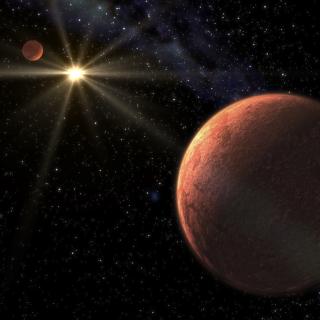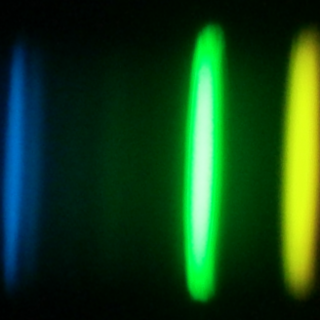Bibcode
Costa Silva, A. R.; Demangeon, O. D. S.; Santos, N. C.; Ehrenreich, D.; Lovis, C.; Chakraborty, H.; Lendl, M.; Pepe, F.; Cristiani, S.; Rebolo, R.; Zapatero-Osorio, M. R.; Adibekyan, V.; Alibert, Y.; Allart, R.; Allende Prieto, C.; Silva, T. Azevedo; Borsa, F.; Bourrier, V.; Cristo, E.; Di Marcantonio, P.; Esparza-Borges, E.; Figueira, P.; González Hernández, J. I.; Herrero-Cisneros, E.; Lo Curto, G.; Martins, C. J. A. P.; Mehner, A.; Nunes, N. J.; Palle, E.; Pelletier, S.; Seidel, J. V.; Silva, A. M.; Sousa, S. G.; Sozzetti, A.; Steiner, M.; Suárez Mascareño, A.; Udry, S.
Bibliographical reference
Astronomy and Astrophysics
Advertised on:
9
2024
Journal
Citations
2
Refereed citations
1
Description
Context. Ultra hot Jupiters (gas giants with Teq > 2000 K) are intriguing exoplanets due to the extreme physics and chemistry present in their atmospheres. Their torrid daysides can be characterised using ground-based high-resolution emission spectroscopy. Aims. We search for signatures of neutral and singly ionised iron (Fe I and Fe II, respectively) in the dayside of the ultra hot Jupiter WASP-76 b, as these species were detected via transmission spectroscopy in this exoplanet. Furthermore, we aim to confirm the existence of a thermal inversion layer, which has been reported in previous studies, and attempt to constrain its properties. Methods. We observed WASP-76 b on four epochs with ESPRESSO at the VLT, at orbital phases shortly before and after the secondary transit, when the dayside is in view. We present the first analysis of high-resolution optical emission spectra for this exoplanet. We compare the data to synthetic templates created with petitRADTRANS, using cross-correlation function techniques. Results. We detect a blueshifted (‑4.7 ± 0.3 km s‑1) Fe I emission signature on the dayside of WASP-76 b at 6.0σ. The signal is detected independently both before and after the eclipse, and it is blueshifted in both cases. The presence of iron emission features confirms the existence of a thermal inversion layer. Fe II was not detected, possibly because this species is located in the upper layers of the atmosphere, which are more optically thin. Thus the Fe II signature on the dayside of WASP-76 b is too weak to be detected with emission spectroscopy. Conclusions. We propose that the blueshifted Fe I signature is created by material rising from the hot spot to the upper layers of the atmosphere, and discuss possible scenarios related to the position of the hotspot. This work unveils some of the dynamic processes ongoing on the dayside of the ultra hot Jupiter WASP-76 b through the analysis of the Fe I signature from its atmosphere, and complements previous knowledge obtained from transmission studies. It also highlights the ability of ESPRESSO to probe the dayside of this class of exoplanets. ★Based on Guaranteed Time Observations collected at the European Southern Observatory under ESO programmes 1104.C-0350(U) and 110.24CD.004 by the ESPRESSO Consortium.
Related projects

Very Low Mass Stars, Brown Dwarfs and Planets
Our goal is to study the processes that lead to the formation of low mass stars, brown dwarfs and planets and to characterize the physical properties of these objects in various evolutionary stages. Low mass stars and brown dwarfs are likely the most numerous type of objects in our Galaxy but due to their low intrinsic luminosity they are not so
Rafael
Rebolo López

Exoplanets and Astrobiology
The search for life in the universe has been driven by recent discoveries of planets around other stars (known as exoplanets), becoming one of the most active fields in modern astrophysics. The growing number of new exoplanets discovered in recent years and the recent advance on the study of their atmospheres are not only providing new valuable
Enric
Pallé Bago

Chemical Abundances in Stars
Stellar spectroscopy allows us to determine the properties and chemical compositions of stars. From this information for stars of different ages in the Milky Way, it is possible to reconstruct the chemical evolution of the Galaxy, as well as the origin of the elements heavier than boron, created mainly in stellar interiors. It is also possible to
Carlos
Allende Prieto